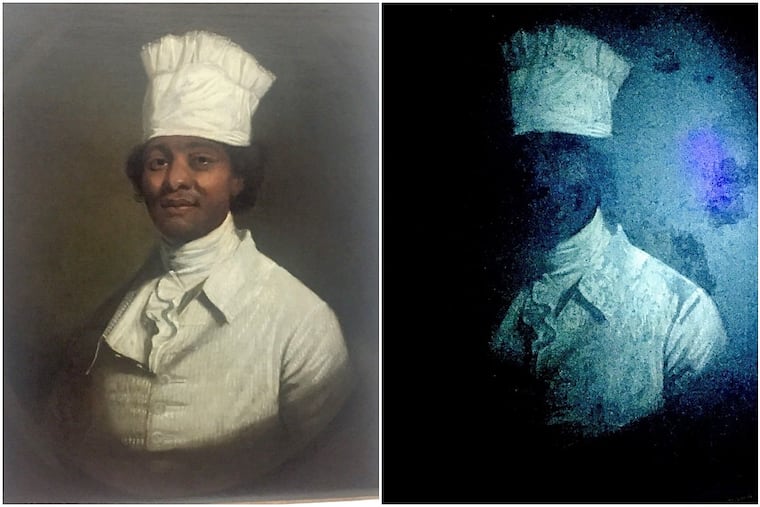Behind the story: How experts knew the painting wasn’t Hercules and wasn’t a Gilbert Stuart
The iconic painting isn't what we thought it was. How do experts know?

Reader: I loved your article about the painting of George Washington’s enslaved chef. How was the ultraviolet light, mentioned at the beginning, used to prove that it was not painted by Gilbert Stuart or a portrait of Hercules?
Craig LaBan: Thank you for reading my most recent article about Hercules and the portrait that turned out not to be of him. He’s been a subject of fascination for me since I first wrote about his life and toils at the President’s House in Philadelphia, and his subsequent escape from Mount Vernon for the Inquirer in 2010. The famous painting long believed to be of him, however, remained a subject of curiosity and controversy. It was considered a possible clue to the final piece of the chef’s story, as he was never captured following his escape.
But the original painting has been in Spain. When I had a chance to observe a group of experts inspecting the painting and evaluate its authenticity at Mount Vernon, where it had been on loan, it was a golden opportunity to untangle its long-standing mystery.
It was a fascinating experience with some deep-dive art analysis that did not make it into my final piece due to space constraints. (Editors!) But the use of UV light cited in the lede is an important thing to clarify. Ultraviolet light cannot penetrate lead, and there is lots of lead in the white paint of that era. That’s why only the white fabric of the clothing was visible when the black light was turned on. The UV light was used to see if there had been repainting on the portrait. There had been, but not so much on the hat, which would have needed to be an entirely new 19th century addition to the painting for it to make sense as a chef’s hat, even though that’s what modern viewers had long accepted it to be. The problem is that the tall chef’s toque did not appear until it was popularized by the French chef Marie-Antoine Carême in the 1820s, long after this portrait was painted.
So what other reason could there be for a hat like this to be sitting atop a subject wearing clothing that was dated to the 1780s? The answer is that wasn’t a chef’s hat at all, but a Caribbean headdress like the ones seen in paintings by Agostino Brunias of Dominican Creoles in that era. That immediately ruled out Hercules as the subject of the painting.
There was still the Stuart question. And it was followed by numerous other discussions among the historians, scholars and curators there about how the details of this artist’s style did not correspond to Stuart, either — the overly precise brush work, the different use of light and shadows with white and gray paint, and also the artist’s intricate focus on details of the subject’s clothing, which, they said, interested Stuart less.
It was a disappointment, for sure, to many who’d looked to that painting for so long as Hercules. It lit our imaginations and fueled further research. But good historians and journalists will always opt for the truth. And in this case we got lucky. Learning this new fact ultimately helped unlock a much bigger find: a solid new lead on Hercules’ final days and grave in Lower Manhattan. And that was the ultimate thrill — to realize that if we follow the evidence, history is still unfolding before our eyes.